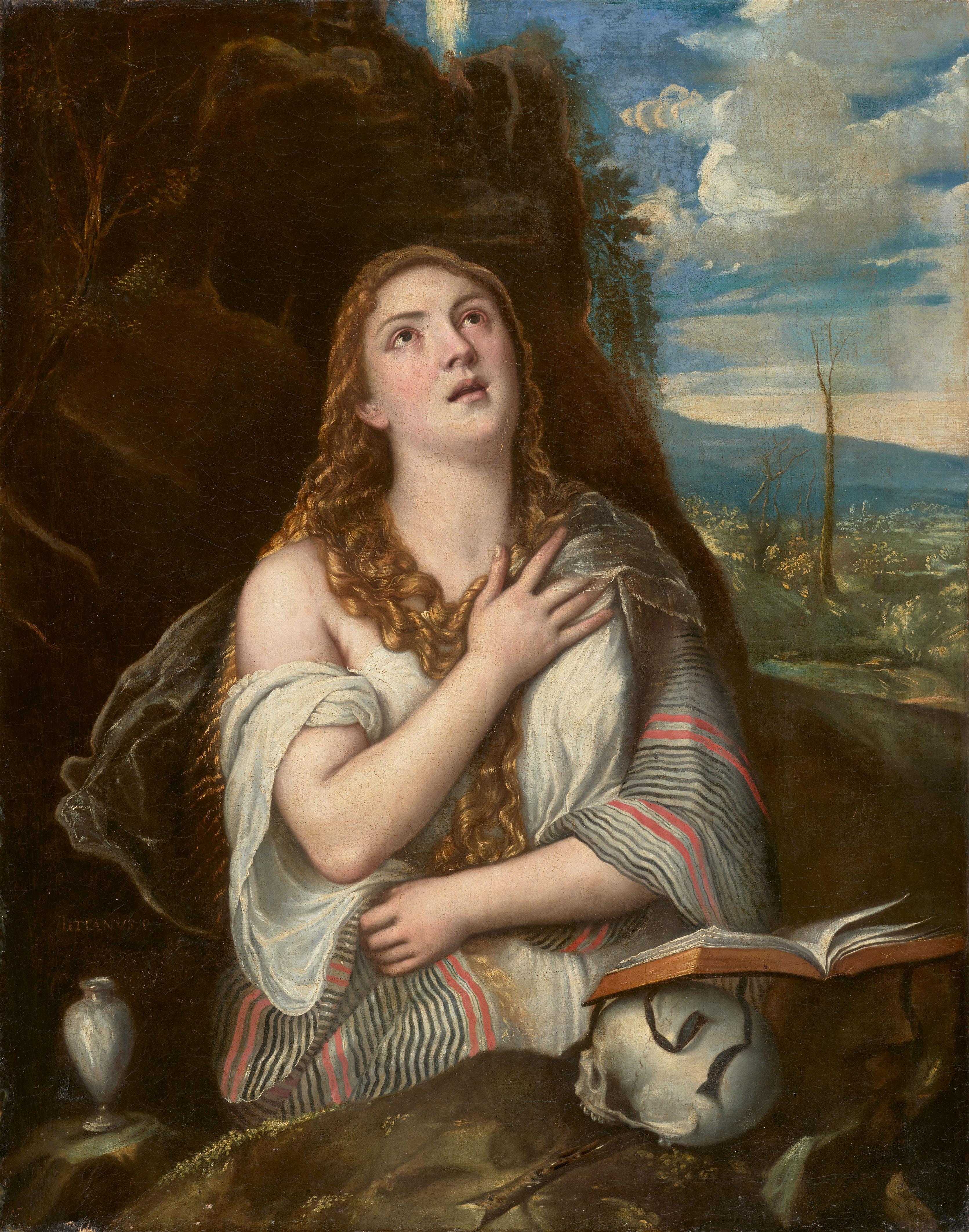Tiziano Vecellio, studio or circle of
Saint Mary Magdalene
Oil on canvas (relined). 130 x 102 cm.
Inscribed lower left: TITIANVSP..
"She raises her eyes to heaven and shows her repentance by the redness of her eyes and her tears for her sins. Thus this picture moves the beholder, and though it is very beautiful, it does not inspire pleasure, but pity." This is how Giorgio Vasari describes Titian's depiction of Mary Magdalene, which he saw in the latter's workshop. In view of the numerous versions, replicas and copies, it can be described as one of the artist's most successful compositions. Titian first explored the theme of the penitent sinner in the early 1530s. The painting, now in the Palazzo Pitti, shows Mary Magdalene as a half-figure, her gaze turned upwards towards heaven (Florence, Galleria Palatina, inv. no. 1912.67). Only her long blond curls cover her naked body and her attribute, the ointment jar, is placed beside her. The ambivalence of this depiction between devotion and eroticism is obvious, for Magdalene's hair covers her body but leaves her breasts exposed.
In the 1550s, almost 20 years later, Titian reconceived the depiction of the Magdalene - in accordance with the precepts of the Counter-Reformation, it is now a depiction that inspires compassion, not lust, as Vasari writes. The posture of the saint - modelled after the ancient statue of Venus Pudica - has remained the same. However, she is now dressed in a white shirt and a precious striped shawl; only the bare shoulder reminds us of her sinful past. The format of the painting - and with it the detail shown - is now larger, leaving room for a view of a landscape and showing a skull and an open book for the saint's meditation. As Giorgio Vasari and later Carlo Dolci reported, the composition was repeated several times by Titian and his workshop. Philip II of Spain and Cardinal Alessandro Farnese, two of Titian's most important patrons, were among those who received a version. The best version though, according to unanimous opinion, remained in Titian's workshop and is now in the Hermitage in St. Petersburg (inv. no. GE-117).
The present painting, which is probably a work by Titian's workshop or circle, follows the Neapolitan version for Cardinal Alessandro Farnese. It differs from the Saint Petersburg version in particular in the depiction of the ointment jar, which is made of alabaster and not glass; also in the background, which shows an autumnal landscape; and in the fluttering veil, which can be seen on the left and is missing in the Saint Petersburg version (for more on the various versions cf. Harold Wethey, The Paintings of Titian, Complete Edition, vol. 1, London 1969, pp. 144-151.).
Provenance
South German private collection.

